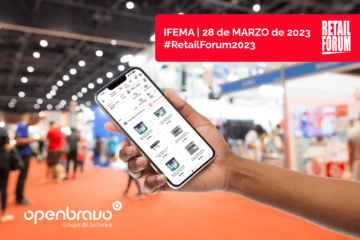Retailers need insight and agility to leverage trends in a restless fashion sector

Fashion retailing has always been a fast-moving sector, but fashion trends used to be fairly predictable. Not any more, however.
Customers are no longer content to be passive consumers of fashion. Thanks to technology, they feel empowered not just to interact with brands but to influence trends using digital channels before, during and after their purchases.
Instagram and other social media increasingly dictate what’s on trend today. But it can disappear almost as quickly. Because of this, many designers and brands have given up trying to forecast seasonal trends far in advance.
See Now, Buy Now
In an era of “see now, buy now” fashion, customers expect instant gratification and clothes may be considered “old” when they have only been worn a few times. According to McKinsey, consumers today buy 60 percent more items of clothing than they did 15 years ago. But they keep them for only half as long as they did before.
Retailers have had to adapt to this phenomenon by compressing lead times and moving to a situation where the assortments in their stores – physical or web – are frequently changed. Items that don’t sell fast enough are quickly diverted to the off-price market.
The fast-fashion leaders have taken this “need for speed” to extremes. Zara takes two weeks to get a product from the design studio into its stores, while UK fast-fashion retailer Topshop drops new products in its stores on a daily basis.
With this new dynamic in fashion retailing, the idea of being able to predict fashion trends has lost its validity. Instead, brands and retailers now need help in sifting through the huge amount of information on trends so that they can decide which ones they might be able to successfully leverage in a specific market, and hopefully identify some longer-lasting themes that will not disappear overnight.
Four Big Ideas
Isabel Mesa, country manager for WGSN, a UK trend forecasting service, calls these themes “Big Ideas”. One such idea is creating Better Basics fashion items, which she sees almost as a backlash against fast fashion by consumers seeking better-quality basic items that do not go out of fashion overnight. “They want to buy less and buy items that are more timeless,” she says.
Another theme, visible to anyone who visits any High Street, is the New Casual trend. Streetwear has saturated the market and is now a staple of “postmodern fashion,” so much so that millennials are not afraid to mix low-end and high-end street fashion together.
Mesa’s third big idea is called Forgotten Demographics. Fashion retailers are learning to target older consumers who have more money to spend on fashion but are less tolerant of poor quality clothes and expect very good after-sales service.
Smart Sensibility is the fourth big idea from WGSN, which has detected how the formal wear market is growing rapidly as the ratio of college-educated working women is increasing across Europe, Asa and the USA.
The End of Fast Fashion?
“We are not seeing the end of fast fashion, not at all. But we are seeing a change, “says Mesa. In particular, younger consumers – she calls them the Empower Up! generation — are concerned about transparency, ethics and sustainability in fashion, so while they will still make impulse purchases, they are also want buy items that reflect their values.
An inability to chime with younger shoppers’ aspirations and values could explain the decline of Topshop, which is the flagship chain in Sir Philip Green’s Arcadia fashion empire, analysts say. So, frequently changing collections counts for little if your customers don’t believe in your brand.
To satisfy the complex and fast-changing needs of today’s fashion consumers, retailers need to embrace digital transformation in all stages of the customer journey. By doing so, they can get closer to their customers, improve speed-to-market, and ensure their e-Commerce and store operations work seamlessly together within a cohesive omnichannel strategy.
Want to know more about the benefits of Openbravo for fashion retailers? Watch our on-demand webinar, “Omnichannel leader or laggard? What’s your choice as a fashion retailer?“.



